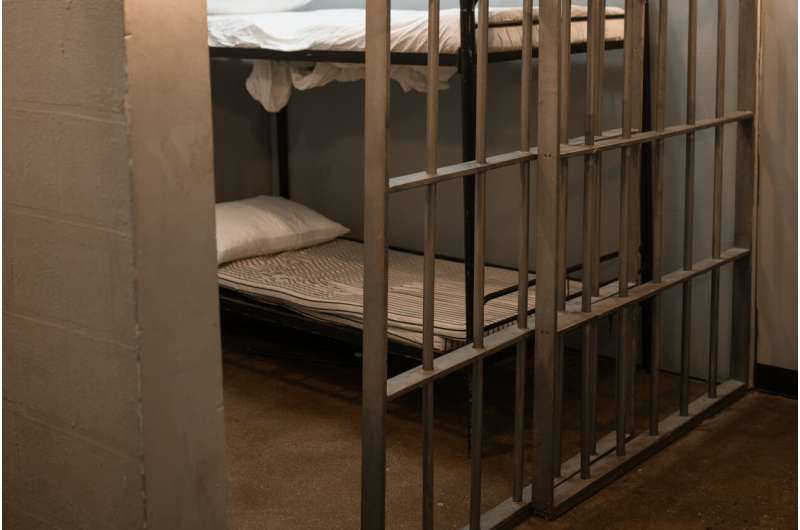This article has been reviewed according to Science X's editorial process and policies. Editors have highlighted the following attributes while ensuring the content's credibility:
fact-checked
trusted source
proofread
Research highlights gender diversity problems in Australian prisons

Trans and gender diverse people housed in male or female prison facilities face dangerous and stressful daily hazards that Australia's prison systems are trying to address to raise standards.
Reforms in several states of Australia are making inroads but much more could be done, says Flinders University criminology researcher Charlie Winter in a new article titled "Correctional policies for the management of trans people in Australian prisons," published in the International Journal of Transgender Health.
"Living in the mainstream community is already difficult for people with gender expressions or identities that differ from the sex recorded at birth, so we investigated some of the hardships they face when imprisoned," he says.
"We find transgender and non-binary people have specific needs surrounding their health, safety and well-being and specifically their segregation and health care access in prison systems.
"In spite of some new measures to improve policy, this review of prison systems across Australia found many policies and practices fell short of meeting the specific needs of these vulnerable individuals."
The Australian Human Rights Commission and others have warned that trans people in prison systems are at high risk of harm and need protection from sexual and physical assaults, increased access to medical care including gender-affirming treatments, access to gender-affirming clothing and belongings and transparency about placement and use of solitary confinement.
Among Australia's eight correctional services, the study notes some inroads into these benchmarked areas—although much still needs to be done. For example, the SA and NT systems have not made their corrections legislation public "despite prominent cases of trans people in those jurisdictions experiencing disproportionate harm" in prison.
Although public, Queensland's policies "are limited and highly discretionary" and are the only Australian jurisdiction to contain a section in every policy document outlining the circumstances in which human rights can be limited.
The research suggests several reforms to support conditions for trans incarceration:
- Provision of safe prison facilities for trans people to sleep, shower and gather to reduce possible violence or sexual assault in the prison system.
- More acknowledgement of the needs of trans people experiencing incarceration in policy setting—particularly young trans and First Nations people who are critically vulnerable in the justice system.
- Further examination of whether policies such as the highly discretionary Policy 35 in South Australia are reducing harm when put into practice.
- Reform to bring policies across Australia's correctional systems into line with each other under a consistent set of standards, to reduce disparities in harms suffered by incarcerated trans people between jurisdictions.
The review article further notes that future policies will at least need to be informed by firm numbers on how many trans people are held in Australian prisons.
More information: Charlie Winter, Correctional policies for the management of trans people in Australian prisons, International Journal of Transgender Health (2023). DOI: 10.1080/26895269.2023.2246953
Provided by Flinders University





















